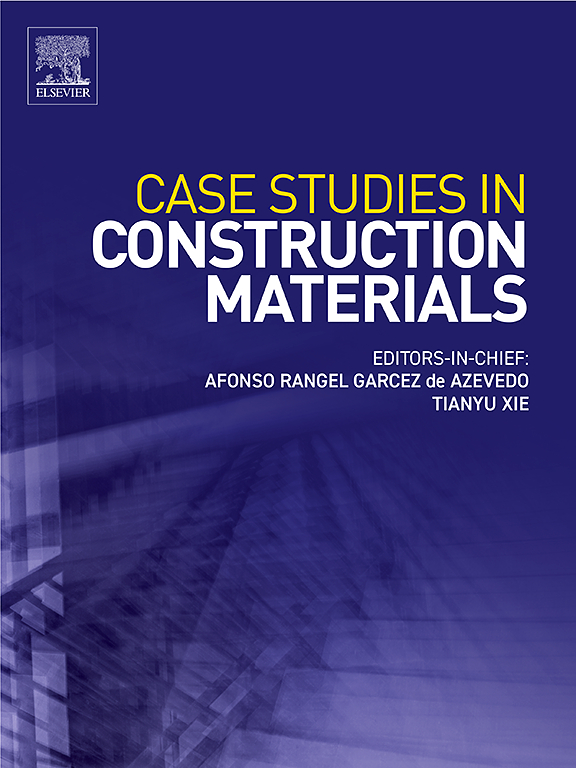Effect of expansive agent on temperature and deformation of concrete under simulated actual construction condition
IF 6.5
2区 工程技术
Q1 CONSTRUCTION & BUILDING TECHNOLOGY
引用次数: 0
Abstract
Prolonging the setting time of concrete is a common requirement for the construction of massive structural engineering, and the molding temperature of concrete changes greatly with the construction season temperature. These actual construction conditions may bring challenges to the use of expansive agent (EA) to inhibit concrete cracking. This paper aims to investigate the effect of calcium oxide EA (CEA), magnesium oxide EA (MEA), and calcium magnesium composite EA (CMA) on the temperature and deformation of concrete under simulated actual construction condition by concrete member test, and discusses the hydration heat, autogenous shrinkage deformation and mechanical properties of cement-based materials containing EA under standard laboratory condition. Results show that CEA, MEA, and CMA increase the temperature rise of concrete members by 3 °C to 7.8 °C, which is not completely consistent with the hydration heat results under standard condition. For the concrete containing EA under the entity variable temperature, the extension of setting time and the increase of molding temperature reduce the shrinkage compensation ability of EA, the average expansion deformation rate of concrete in the temperature rise stage is reduced, and the average shrinkage deformation rate of concrete in the temperature drop stage is increased. Temperature rising inhibitor (TRI) is recommended to be used together with EA, which can eliminate the adverse effect of EA on the increase of temperature rise, greatly improve the shrinkage compensation ability of EA, and hardly reduce the later strength of concrete.
模拟实际施工条件下膨胀剂对混凝土温度和变形的影响
延长混凝土凝结时间是大型结构工程施工的普遍要求,混凝土的成型温度随施工季节温度变化较大。这些实际施工条件给膨胀剂抑制混凝土开裂带来了挑战。通过混凝土构件试验,研究了氧化钙EA (CEA)、氧化镁EA (MEA)和钙镁复合材料EA (CMA)对模拟实际施工条件下混凝土温度和变形的影响,探讨了含氧化钙EA的水泥基材料在标准实验室条件下的水化热、自收缩变形和力学性能。结果表明,CEA、MEA和CMA使混凝土构件的温升提高了3℃~ 7.8℃,与标准条件下的水化热结果并不完全一致。对于实体变温度下含有EA的混凝土,凝结时间的延长和成型温度的升高降低了EA的收缩补偿能力,混凝土在升温阶段的平均膨胀变形率降低,而混凝土在降温阶段的平均收缩变形率增加。增温抑制剂(TRI)推荐与EA配用,可消除EA对温升升高的不利影响,大大提高EA的收缩补偿能力,几乎不降低混凝土的后期强度。
本文章由计算机程序翻译,如有差异,请以英文原文为准。
求助全文
约1分钟内获得全文
求助全文
来源期刊

Case Studies in Construction Materials
Multiple-
CiteScore
7.60
自引率
19.40%
发文量
842
审稿时长
63 days
期刊介绍:
Case Studies in Construction Materials provides a forum for the rapid publication of short, structured Case Studies on construction materials. In addition, the journal also publishes related Short Communications, Full length research article and Comprehensive review papers (by invitation).
The journal will provide an essential compendium of case studies for practicing engineers, designers, researchers and other practitioners who are interested in all aspects construction materials. The journal will publish new and novel case studies, but will also provide a forum for the publication of high quality descriptions of classic construction material problems and solutions.
 求助内容:
求助内容: 应助结果提醒方式:
应助结果提醒方式:


